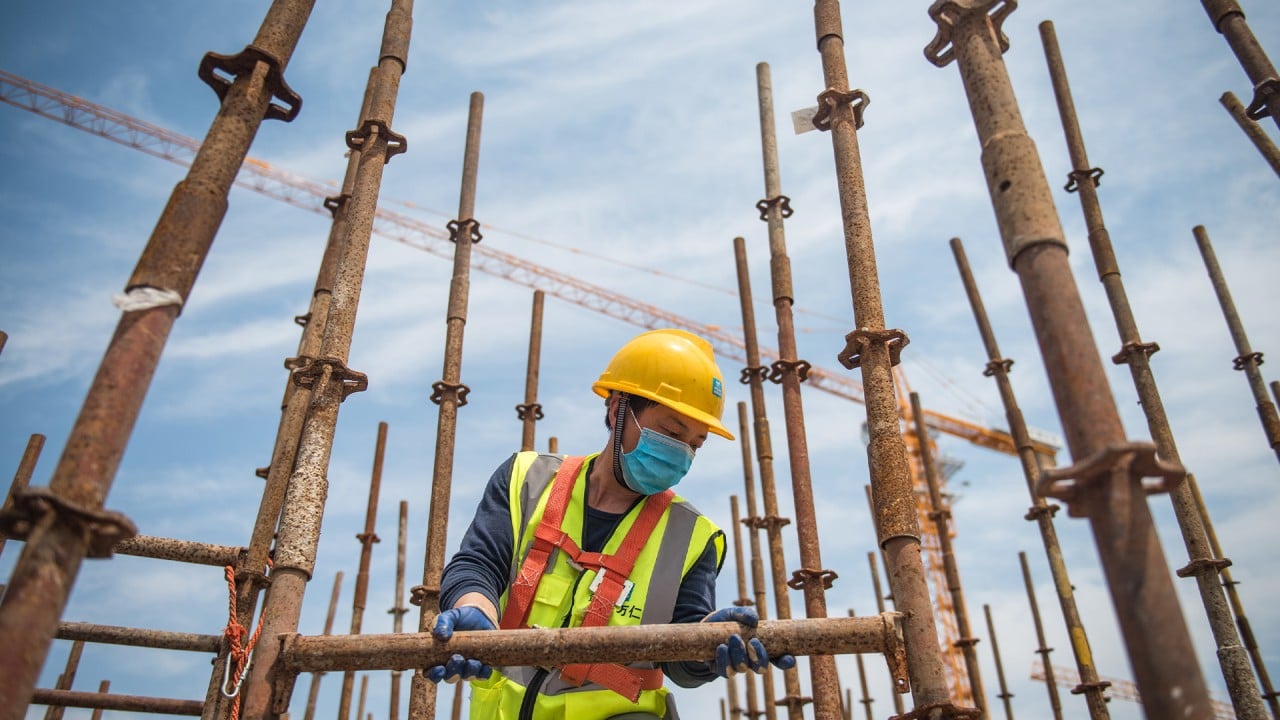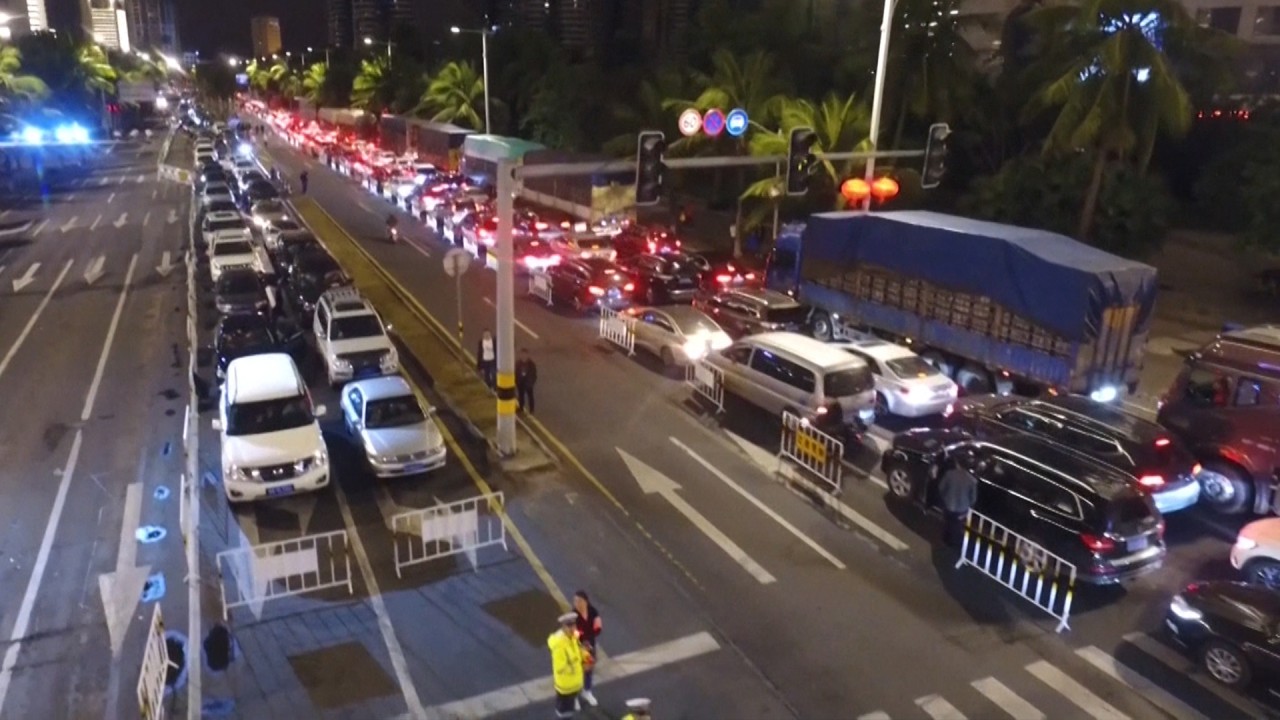
China’s Hainan free-trade port plan draws approval, and scepticism, as questions linger over implementation
- Chinese businesses are heading to Hainan after Beijing last month unveiled plans to turn the island into a ‘free-trade port’
- But some investors and locals are taking a wait-and-see approach, wary that government promises may not translate into real rewards
This is the first story in a three-part series examining China’s plan to transform Hainan into an internationally influential ‘free-trade port’, as Beijing faces what it perceives to be an increasingly hostile international environment. You can read the second part in the series here.
Political banners hanging from walls and fences across China’s Hainan province are a reminder that President Xi Jinping is going all out to turn the tropical island into the world’s largest free-trade port.
Barely a month after Beijing unveiled sweeping plans to turn the island of 9.3 million people into an internationally influential commercial hub, work is ramping up to transform farmland into 11 pilot industrial estates for the first stage of development.
These enclaves will be the first to allow duty free imports and lower taxes to attract investors, with the incentives expanded to the entire island by 2025.

05:02
Coronavirus backlash further fraying China’s ties to global economy
Transforming Hainan into a free-trade port has been “planned and arranged” by Xi himself, as part of a strategy to maintain global trade and service flows when the United States is threatening to decouple from China and Hong Kong’s role as international finance centre is under threat following the implementation of a controversial national security law.
In seeking to transform the island, Xi is reaching for the playbook of China’s former paramount leader Deng Xiaoping, who in the 1980s turned Shenzhen from a sleepy fishing village into a thriving metropolis by granting it special privileges and courting foreign investment.
Interviews with investors and authorities on the island indicate the pilot zones bear a number of similarities with existing “free-trade zones” in the mainland, with many of the same incentives used to lure high-end manufacturing and services firms to the province.
Among the policies being rolled out, Hainan is slashing duties to zero on imported goods, lowering income tax for businesses and individuals, and easing visa requirements for foreigners.
Compared to other areas across China, investing in Hainan will have a lower risk in the coming years given its excellent policies
Chinese businesses are already flocking to Hainan – a 35,000 sq km island that is 32 times the size of Hong Kong and 49 times that of Singapore – in the hope that early investment will bring large profits in the future.
After a two-day trip there last month, Beijing resident Gao Zhendong quickly decided to set up a new investment and services company in the Hainan Resort Software Community in Haikou, the provincial capital.
The firm aims to connect small Chinese businesses with Southeast Asian firms to work on imported semi-finished goods – the so-called processing trade.
“Compared to other areas across China, investing in Hainan will have a lower risk in the coming years given its excellent policies, such as duty-free [import] treatment for most goods and commodities, lowering tax rates for selected individuals and companies to 15 per cent, as well as allowing goods to enter the rest of China duty free after adding 30 per cent to their value in Hainan,” Gao said.
Everyone can see there are strong expectations that new capital will enter Hainan, and we hope local authorities will actually launch free trade, low taxation and minimum government intervention this time
In many ways, Hainan is an ideal place for China to conduct its economic policy experiment, as it lies some 3,000 kilometres from Beijing and its small-sized economy – less than a fifth of Shenzhen’s last year – meant that even if it did not work the cost would be relatively low.
Hainan has failed Beijing before. Deng, after his success with Shenzhen, designated the island as China’s “largest special economic zone” in 1988, but it quickly became a haven for speculators and smugglers. A property bubble burst in the early 1990s in what was remembered as one of the most spectacular economic failures in China’s recent history.

00:56
China and South Korea open enormous industrial zone to promote bilateral collaboration
Xi declared Hainan would become a free-trade zone in April 2018, just before China and the United States became locked in a tit-for-tat trade war, but progress has been limited to date.
Although Beijing has claimed Hainan will be an internationally influential free-trade port by the middle of the century, the reality on the ground is far different and many businesses are taking a wait-and-see approach as a result.
“The policies are very good, nowhere in China can compete with Hainan to this degree, but we need to wait and see how the programme is implemented,” said Wei Xiaofan, founder of Housheng Culture and Tourism Group, which manages a billion-yuan resort and business complex in Hainan’s Sanya city.
“Everyone can see there are strong expectations that new capital will enter Hainan, and we hope local authorities will actually launch free trade, low taxation and minimum government intervention this time.”
Hainan still has a trust deficit for many foreign investors, as the new policies have not been accompanied by promises to relax China’s capital or information controls. Nor has the government made a guarantee of judicial independence. Hainan attracted merely US$1.51 billion foreign investment in 2019, or about 1 per cent of foreign direct investment inflows into China.
Local officials have praised the free-trade port idea as a breakthrough in economic development that will insulate China from foreign protectionist policies.
“Hainan free-trade port is an active, unilateral opening, reflecting the world’s highest level of openness,” Chen Xiaohua, deputy director of Hainan Comprehensive Deepening Reform Committee, told the South China Morning Post.
“For example, regardless of whether any foreign country imposes tariffs on Hainan’s goods and how high those tariffs are, Hainan will have tariff-free imports on most commodities from all other countries.”
Chen, who is also on the provincial working committee for the pilot free-trade zones, said the initiative would also help Hainan attract foreign talent.
“There is a big contribution from and responsibility for the Hainan free-trade port to promote globalisation.”
Xi directly planned, deployed and promoted the initiative, sending a clear signal to the world that China was serious about opening up further, Chen said, while the island’s duty-free policies will make it more competitive.

00:55
China’s Hainan province to ban fossil-fuel car sales by 2030
Part of the project will see Hainan build a “second customs line” to allow duty-free shipments of goods to the mainland, provided they have had at least 30 per cent value added.
“Take an imported high-end luxury car priced at 700,000 yuan (US$98,900) for example,” Chen said.
“If the brand assembles the key parts in Hainan with a certain percentage added value and then ships to the mainland market, the price would only be around 600,000 yuan.”
The government also hopes the economic development resulting from the free-trade port will help attract more tourists to Hainan, including domestic visitors who might otherwise go overseas. Chinese tourists spent US$127.5 billion overseas in the first half of 2019, according to the State Administration of Foreign Exchange. Some 54 per cent of that was spent in Asia.
Despite Xi’s push to turn the island into a world-beating free-trade hub, locals were wary of the island’s inability to capitalise on government policy so far.
“Hainan has been struggling to find its place in the nation’s economic landscape, even though there have been many national strategies to promote it. So far it has lagged behind what was expected,” said Jeff Sun, a Hainan native in his late 30s who sold luxury foreign cars.
“In the past two years, there have been a number of new arrivals from the mainland, but as a local I don’t think income and business profit has increased.”
The second story in the series looks at plans to transform Hainan into a duty-free shopping hub to compete with the likes of Japan and Europe.




